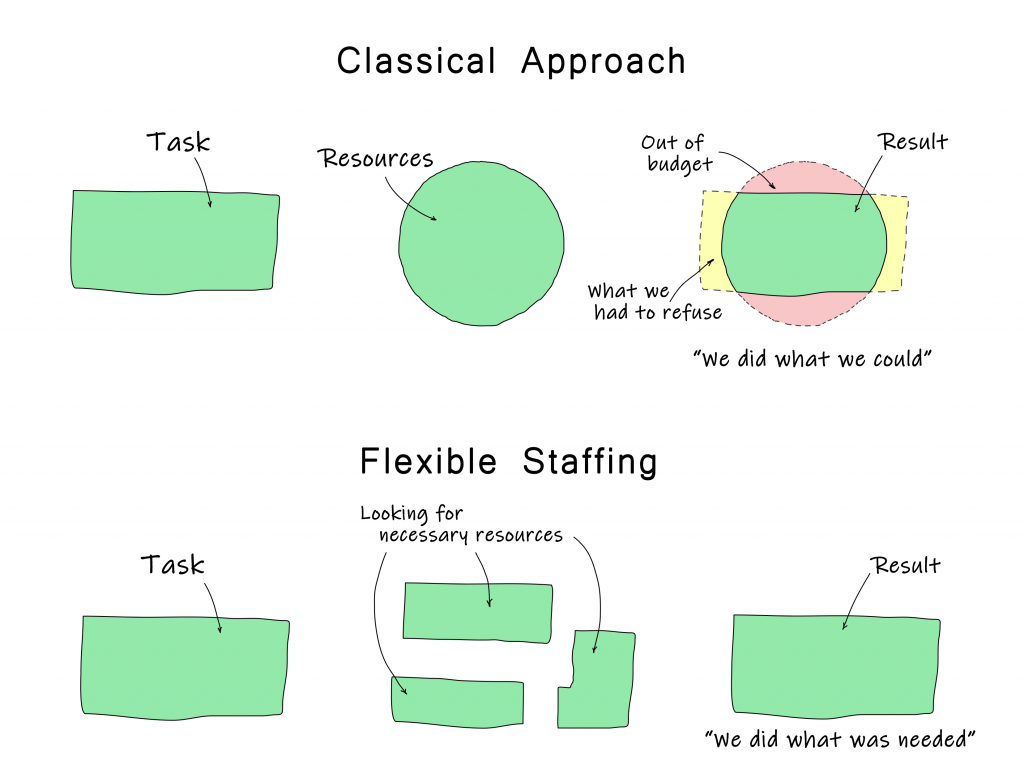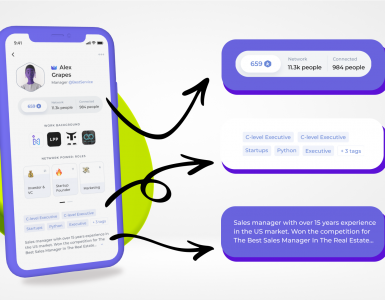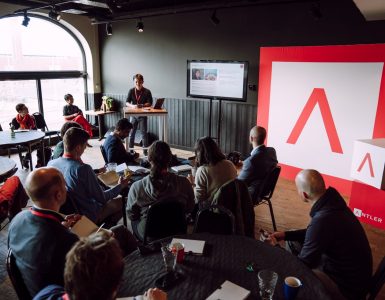IT Dev started in-house. Then, outsourcing appeared. What’s next? Studies show that the next step in IT Dev elastic staffing, or flexible staffing. At the heart of this approach is a simple idea: each project needs its own set of people.

One IT team will not be able to build a fitness app and a government portal as efficiently as two more specialized teams.
But today, the development market in most cases works according to the old model: a company either uses internal resources or goes to a contractor whose resources are fixed. At Skipp (IT product development service), we introduced the principles of flexible staffing and here’s why this approach is more profitable than the traditional one.
What does it mean to work with a flexible staff?
When a contractor with a flexible staff receives a task, they participate in the discussion and take on the role of technical partner, or co-founder. This is necessary in order to better understand what problem the client needs to solve and what team needs to be assembled.
Thus, the contractor does not limit itself or the customer to existing resources, but proceeds based on the needs of the project. For example, if there are no people within the company with experience in writing the server part for marketplaces, then the contractor will find an experienced freelancer.
Finally, working on a flexible staff does not imply that the specialist is connected to the project from start to finish. The tester is only connected when there is a need for quality control, and the designer is disconnected when they finish the front-end review.
It turns out that development based on the principle of a flexible staff is working with a contractor who does not just accept technical specifications and write code, but is included in the task and creates a solution together with the client. Then they look for suitable specialists and lead the process:

Flexible staff helps to save and achieve the desired result
Why is it more profitable than traditional development?
1. You can work remotely
In a flexible state, employees do not have to be in the same room. They can be from different countries and time zones and work in a way that suits them. The main thing is that they keep in touch with the team and achieve their goals.
Working from home is becoming popular and commonplace. At the same time, according to research, the inability to control remote workers is the main problem why IT companies refuse the services of freelancers and outsourcers. So the sooner a business learns how to manage a distributed team, the better.
It becomes more profitable to work with a flexible staff: you learn how to manage work remotely and adapt business processes to remote work. A product from Oslo, a designer from the US, developers in Korea, testers in Brazil — a fully functional flexible staff, the norm of IT projects in the near future.

Our teams are all distributed: employees work remotely, often from different cities. We are engaged in development, we help clients from an idea to the creation of full-fledged IT services, so we are often looking for people with a specific background. These are easier to find, if you do not limit the search by geography.
To work with flexible staffing, we have created our own platform for tracking tasks and projects, so that work communication does not suffer from distributed geography.
2. Product managers are more competent — risks are lower
According to experts, the growing popularity of distributed teams will lead to the emergence of a new generation of projects and products — creative, flexible, working on both the product and business processes at the same time.
This is logical: the product manager is the main employee in a flexible state. They receive a task, discuss it and recruit developers for each project. Working with flexible staffing strengthens managers, allows them to quickly gain competencies and familiarity.
Companies that develop with a flexible staffing are not selling developer man-hours, but an intellectual product — the experience of product managers in the field of hiring, their understanding of business processes and the ability to correlate the client’s task with technology.
Thanks to such management, the contractor becomes not a contractor, but a partner. They help the client refine the idea and select the team, so they share the responsibility for quality. Due to more flexible management in the project, risks are reduced.
An American study was published in which they studied the experience of IT teams: how often projects overspend resources, miss deadlines, or do not implement planned functionality. In their sample, only 9% of projects with flexible staff were such. Among traditional projects — 70%.
One of our clients is the co-founder of the Sirius b2b marketplace for charitable organizations. Companies support charitable projects through this service. We helped them refine the idea and made prototypes. Co-founders attracted investments, then we started development.
It was a pivotal project: we were finally convinced of the effectiveness of the flexible staffing model and the importance of a product with experience in different industries. Managers in flexible staffing gain experience faster, their value grows, so that at a crucial moment they can determine the outcome of the project.
At first, the founders of Sirius worked directly with the developers for six months, but the project was behind schedule. As soon as an experienced product joined, the work went several times faster. We connected two parallel teams and met the deadline.
3. Budget spent more efficiently
In the traditional approach, the task is delegated to full-time employees — even if they lack knowledge, or, conversely, they are too qualified. A flexible staff recruits specialists with the level and competencies that are needed in the project. That is, the developers will be with relevant experience and vision, and will most likely be able to complete the task faster than the average specialist.
Only those employees who are needed right here and now are taken to the flexible staff for the project. They will disconnect from the project when their task is over, so people who are underloaded with tasks do not have to spend a budget every month. A company that provides you with flexible staffing will find outsourcers on its own if it is profitable, or contact a specific freelancer on the exchange and pay them only the required number of hours.

In the same American study of IT teams with flexible staff, they found that such projects spend their budget on staff 30% more efficiently than in-house development. Freelancers are looking for competencies for a specific project, it goes faster, people are always busy, on average it takes less staff.
For example, Samsung was able to reduce the duration of administrative processes by 58% using freelancers and the idea of a flexible staff. Less time is spent on hiring and onboarding, because the employee found for a specific project already has the necessary skills and competencies. It does not need to be taught and introduced to technology. As a result, the business saves the budget.
Often, our clients have already spent several development cycles with outsourcers, and the product still does not work as it should. We usually manage to make a working product faster and for less money than was already spent on a non-working one.
4. Work is distributed more evenly: no sleepless nights and crunch at the end of the project
The flexible staff consists of an experienced product who, together with the client, sets the task, as well as freelance developers recruited specifically who have already worked on similar projects. As a result, we get a team that understands the risks well and presents the final result.
This helps distribute tasks more efficiently and can get rid of the classic crunch problem – a situation where a significant part of the work is done in the last couple of days, because only now the team is completely immersed in the task and identified all the pitfalls.
A US study of agile IT teams found that these types of projects typically lack crunch. In a flexible state, they can quickly notice if something is not going according to plan, because people have already worked on similar projects. This reduces the risk of discovering a problem at the last moment and providing the team with several sleepless nights.
Another study confirms that freelancers can generally manage work and close projects more effectively than in-house managers. Sometimes the problem is not even experience, but the fact that complex relationships can form within the state. A conflict between managers for a promotion can lead to the fact that both of them will not cope with the tasks: they will overload projects with unnecessary things or change the approved design at the last moment. When a project is led by an outsider, there is no conflict of interest.
One day, a project was contacted by Skipp, where earlier there were problems with development deadlines: for various reasons, the team often had to close tasks at the last moment, they could not cope. When the Skipp products joined the process, the work began to go more evenly: due to the correct decomposition of tasks and prioritization of backlogs, the second release is already happening on the same day according to the plan, the team has been working for two months without missing deadlines.
5. It is more comfortable for specialists to work
An important advantage of flexible staffing, in addition to speed and cost-effectiveness, is positive feedback from employees. In fact, these are developers, managers and freelance designers who join the project through an intermediary. They are hired on a flexible staff only if they fit the profile and experience, which means they get more pleasure from work: they don’t have to endure boring tasks or finish their studies to be useful.
Modern research shows that often freelancers are more satisfied with their work than their colleagues in the state. This is attributed to the ability to independently schedule and choose projects, learn new skills faster and change the specifics of work more often.
Flexible staffing is the future of development

According to the statistics of the same American study, ⅔ of projects with a fixed staff end up with major problems: the client either does not receive a result, or they appear later, costs more or does not meet the requirements. In projects with flexible staff, the situation is much better, and here’s why:
- In such a model, you can quickly learn how to manage distributed teams. Employees can work remotely, even live in different countries. This is the new normal, and a flexible staff helps businesses adapt to it.
- Product managers in a flexible staff are gaining competencies and experience faster, the quality of management is growing, and risks are decreasing. Projects are less likely to miss deadlines or fail to achieve planned functionality.
- The personnel budget is spent more efficiently because people are hired for specific tasks and for a limited period of time, rather than for the entire project.
- Thanks to experienced products, work is distributed more evenly, projects are more predictable, and the team has fewer sleepless nights.
- Employees are more comfortable in a flexible staff, because they turn into freelancers: they can choose projects, estimate the cost of their work, and manage their schedule.
As flexible staffing is used in a variety of business models today, professionals discuss that on Intch. It’s a given that you can start your own business talk and get feedback from countless experts, talents and entrepreneurs on flexible staffing directly on the app.








We’ve tried flexible staffing – and it seems like a good idea but when you get into it – you have to train the team for each project and a lot of time onboarding takes more tie than the project work itself. 0/10, do not recommend
Interesting approach, could work, but it does make the job market even less stable than it is today (if that’s humanly possible ofc)
I think if everyone used this, we’d have way more skilled professionals on the market. If you know that you won’t get hired on the next project unless you perform, people wouldn’t get lazy
In this diagram that you drew on resources – you didn’t take into consideration the resources of the HR team who hires the people. If you did, it wouldn’t look so dreamy)))